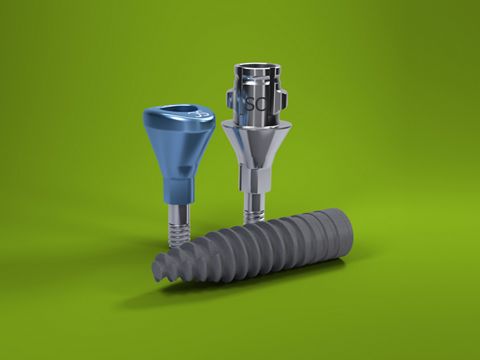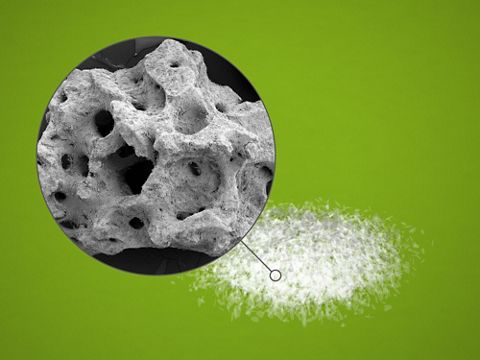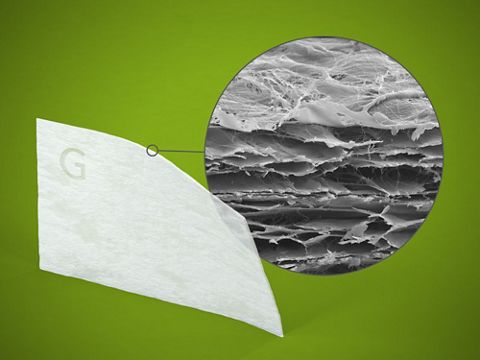Guided surgery in combination with cerabone® and Jason® membrane in challenging esthetic cases
A clinical case report by Michael Kristensen, Denmark
Lateral incisor congenital agenesis has gained increasing attention in recent years, as esthetics has become a crucial element when discussing successful outcomes in implant dentistry. In this case report, Dr. Kristensen presents a patient with a highly demanding esthetic and anatomical situation. The precise three-dimensional position of the implant was successfully achieved thanks to digital planning and guided surgery. The desirable gingival volume and contours were achieved with the use of botiss cerabone® and Jason® membrane.
Initial situation
The patient, a healthy 22-year-old female, had agenesis of 12 and 22, and was wearing a provisional prosthesis (Figs. 1,2). She came to our clinic for implants for esthetic reasons.
Treatment planning
The CBCT scan (Figs. 3,4) showed very limited space between the roots of 13 and 11, as well as very little bone volume facially - especially in region 22, where there was a need for substantial augmentation. Straumann 2.9 mm SDI implants were chosen: Because of the small dimension and also because of the tapered tip to achieve primary stability of the implants, especially in region 22 where the bone was very limited and substantial simultaneous augmentation was needed. Furthermore, guided insertion was preferred due to the lack of space between the roots. A surgical guide (Figs. 5,6) was made by MDG, Sweden.
Surgical procedure
A marginal incision was made from the central incisor to the canine, including a releasing incision distally to avoid scar formation in the esthetic zone (Fig. 7). The mucoperiosteum was reflected (Figs. 8,9), and the surgical guide was placed on the teeth (Figs. 10,11). The initial drilling was done with the guide in place, while the implants were inserted without the guide. The Straumann SDI implants were placed in region 12 and 22 (Figs. 12-18). The buccal bone was intact in region 12, but needed augmentation for long-term stability of the implant and to avoid grey shine through the gingiva and gingival recession. In region 22 all the implant surface was exposed facially. botiss cerabone® was added on the buccal aspect and covered by a botiss Jason® membrane (Figs. 19-23). The periosteum was incised in region 22 to obtain primary closure for submerged healing without pulling on the tissues. Region 12 was left for transgingival healing (Figs. 24,25). The implants were left to heal for 3 months before the healing abutment surgery on the left side. The flipper was worn during this time.
Prosthetic procedure
After 3 months, a small incision was made on top of the implant at 22, and the mucosa pushed to the buccal side. A longer ovoid healing abutment was placed to form the correct emergence profile (Figs. 26,27). After 2 weeks of further healing, a scan was recorded for the restorations (Figs. 28-30). In the digital setup a discrepancy in tooth size compared to the central incisors was detected – adding composite to 13, 11, 21 and 23 to widen these teeth and thereby create smaller 12 and 22 was discussed for a better esthetic outcome (Figs. 31-37). As the patient was not sure of the possible esthetic outcome, two provisional composite crowns were made directly on the healing abutments (Fig. 38). The patient returned two days later requesting the composite buildup of 13, 11, 21 and 23. The composite was added and polished. Then the final zirconia crowns were made and cemented on the metal Variobase abutment for SDI (Figs. 39-41).
Final result
IThe patient was very happy with the result, which blended very naturally with the dentition as regards the color and shape of both the crowns and the gingival portion. Lab work by Dentolab, Viborg, Denmark
Conclusion
Straumann SDI implants in combination with botiss Biomaterials (cerabone® and Jason® membrane) made this narrow case uncomplicated with a very good esthetic result. A wider implant would have proved problematic regarding the roots of 11/13 and also a need for further augmentation at 22.



